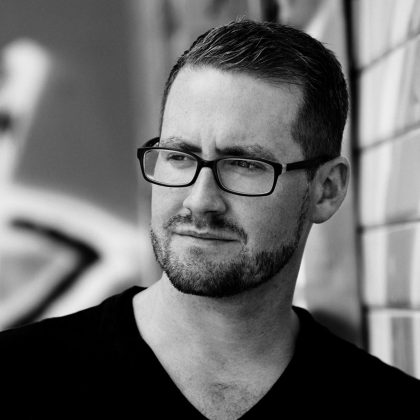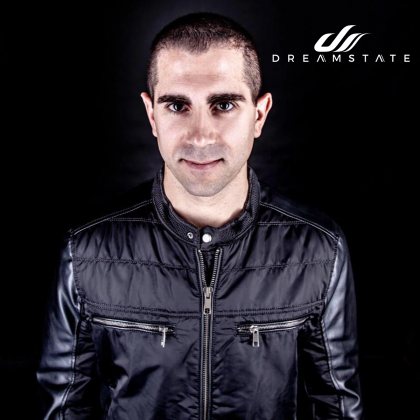The KLF “3 A.M. Eternal”
The birth of our underground brand Factory 93 not only brought on an adrenaline rush reminiscent of the renegade warehouse era of raving—on which Insomniac was founded—but it also had us thinking back to all the people, places and parties that made this whole operation possible. And with that came a burning desire to crack open our collection and dust off the classic records we couldn’t live without. Through our From the Crate series, we’ll be breaking out both seminal and obscure cuts alike, imparting some knowledge in the process.
The KLF is one of the most important dance and ambient artists of the past 30 years, but they aren’t necessarily well known to anyone who was born since 1990—even more so in America than in Europe. That’s because the KLF retired in 1994 (thankfully, a reunion of sorts is brewing later this year), devoting themselves to more obscure and experimental projects the past couple of decades.
But for a brief period, the KLF were a bunch of daft punks making ostensibly postmodern art, using pop and dance music as a template. And they were somehow making mainstream pop hits, both in the UK, where they were based, and in America. One of their best and most enduring singles is “3 A.M. Eternal,” a classic vocal house anthem that is as silky as it is bizarre. But before breaking down how that tune came about and why it fits into the dance canon, perhaps a little more background is needed.
That’s because, quite simply, there’s never been a project quite like the KLF, either before or since. The only project that feels close enough to mention is the Residents, whose artistic antics jelled seamlessly with their restless and prolific desire to make music.
Dance music, techno, and ambient have had their fair share of eccentric oddballs throughout the years (Björk, Drexciya, and Anklepants, anyone?), but the KLF was both alienating and extremely accessible, a serendipitous collision of time and space. The brainchild of Bill Drummond and Jimmy Cauty, the group started in 1987 as the Justified Ancients of Mu Mu (aka the JAMS), whose mythos from the beginning was full of allusions to the cult conspiracy novels The Illuminatus! Trilogy. The music they made as the Mu Mus was a more ostracizing, sample-heavy take on ‘80s “white guy rap,” and much less catchy or anthemic than some of their work as KLF, but worth checking out nonetheless.
They briefly called themselves the Timelords and produced “Doctorin’ the Tardis” in 1988. It’s essentially a jokey novelty record (another one rife with pop culture samples) that references the classic British TV show Doctor Who. In a classic example of their style, they used pop culture to sneak in criticisms of late capitalism and neoliberal austerity politics, which were in high fashion by the end of the ‘80s. But “Doctorin’ the Tardis” wasn’t just a goof; the single became a #1 record in the UK. This was a huge turning point for the anarchic duo, as it was still a time when a hit record came with an immediate influx of cash, and what they would do with that cash as they segued into the KLF (Kopyright Liberation Front) would become the stuff of legend.
“The KLF was both alienating and extremely accessible, a serendipitous collision of time and space.”
As they entered 1989 and the incoming Second Summer of Love, the KLF embraced house, hip-house, and to an extent, freestyle, which were particularly en vogue by the late ‘80s. They were busy working on the full-length Chill Out, an ambient/psychedelic plunderphonic collage tape that is still highly revered and, perhaps, their most enduring single artifact.
But it was the dancefloor-ready “stadium house” monsters they released in 1990, and reworked for 1991, that will always be their most club-ready and have proved to be surprisingly timeless and relevant to 2017—even if so many of the their touchstones sounded dated by the late ‘90s. The three most successful of these singles were “3 A.M. Eternal,” “What Times Is Love?,” and “Last Train to Trancentral,” which would go on to form a lavish three-part music video release. These songs were big, with big hooks, and plenty of over-the-top absurdity, like some sort of experimental proto-Jock Jams.
The first version of “3 A.M. Eternal” showed up in 1989 and was pressed and remixed again and again over the next three years.
The original “Pure Trance” version—much more of a jazzy, smoky-eyed number than the later iterations—topped the charts, feeling like it could be a lost Larry Heard cut. Then came the “Break for Love” mix, which teased the Pure Trance version into something a little poppier. The “Guns of Mu Mu” mix saw them starting to flirt with fully crossing over, while still keeping it dubby.
But it wasn’t until the 1991 “(Live at the S.S.L.)” version of “3 A.M. Eternal,” with full choruses and verses, that the song became a huge chart hit and proved that, for all of their subversions and what not, this group really did have a knack for making catchy, pop-inflected dance music.
Most notably, the late MC Ricardo da Force’s “KLF is gonna rock ya” and other bars really tie the track together, along with Maxine Harvey’s syrupy house vocals to smooth it out. The band commissioned two different videos, one for the UK market and one for America. They’re both predictably absurd, while also playing with the pop music video aesthetics of the era and underscoring the bloat of the late ‘80s and early ‘90s record industry—which basically describes a lot of the KLF approach in general.
“3 A.M. Eternal” helped make the KLF Britain’s highest-selling singles act in 1991. They had proved they could top the charts with music that was better than “Doctorin’ the Tardis,” and it seemed like after the Stadium House Trilogy, they didn’t have much more to prove.
In 1992, they staged a punk version of “3 A.M.” at the BRIT music awards. Grotesquely parodying the original, they ended it by shooting a fake machine gun into the crowd and announcing their retirement. What a way to go out!
They later deleted their back catalog and eventually put the KLF project to bed—yet that’s not the end of the KLF story. They are now back after a 23-year retirement. Who knows what depraved pranks or earnestly grotesque projects they have waiting for us months down the road? Who knows if they’re even making music anymore? The only thing that’s certain is that nothing is off the table, which so perfectly complements the hellscape of consciousness that is 2017.





